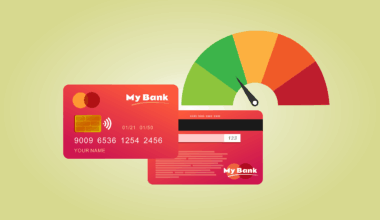How to Choose the Right Crowdfunding Model for Your Business
Crowdfunding is revolutionizing how entrepreneurs secure funding for their projects. Understanding the types of crowdfunding is crucial to selecting the right approach for your business needs. There are multiple models available, including donation-based crowdfunding, rewards-based, equity crowdfunding, and debt crowdfunding. Each model has its benefits and drawbacks, therefore careful consideration is key. For instance, donation-based crowdfunding does not require repayment, making it appealing for charities and social causes. Conversely, equity crowdfunding allows backers to become shareholders, giving them a vested interest in your business success. In this article, we will discuss the common types of crowdfunding to help you make an informed decision.
Donation-Based Crowdfunding
Donation-based crowdfunding serves individuals or organizations seeking to raise funds without offering anything in return. This model is particularly suitable for charitable causes, medical expenses, or community projects. Supporters donate funds driven by goodwill and the desire to make a positive impact. Effective campaigns usually involve storytelling and connecting with potential donors on an emotional level. Platforms like GoFundMe and JustGiving exemplify this model. Creating a compelling narrative can enhance visibility and increase donations. Be mindful, however, that even in this model, clear communication and gratitude towards donors can foster long-term relationships and future funding opportunities. Identify your needs and articulate your mission, while also establishing a budget to push your campaign further.
Rewards-based crowdfunding provides a unique incentive system where backers receive tangible rewards in exchange for their contributions. This model is widely used for creative projects, innovations, and product launches. Platforms like Kickstarter and Indiegogo exemplify successful campaigns offering various incentives, such as early access to products or exclusive merchandise. The key to a prosperous rewards-based campaign lies in defining attractive rewards that resonate with your target audience. Additionally, setting realistic funding goals and timelines can enhance campaign credibility. Prepare to communicate updates and showcase milestones during the funding process. Understanding your project’s audience allows for effective engagement, maintaining enthusiasm and generating buzz around your campaign.
Equity Crowdfunding
Equity crowdfunding presents unique opportunities for startups looking to raise capital while offering investors shares in the company. This model attracts backers who desire a return on investment (ROI) and a stake in your success. Generally regulated by financial authorities, equity crowdfunding provides an avenue for businesses that prefer this financing structure. It involves higher stakes and risks for both parties, demanding transparency and effective communication. Websites such as SeedInvest and Crowdcube facilitate equity crowdfunding campaigns that align with investor interests and business growth. Entrepreneurs must present a solid business plan and financial projections to attract potential investors. Building trust and nurturing relationships with investors can result in future funding options.
Debt crowdfunding, also referred to as peer-to-peer lending, allows businesses to raise money through loans from individual investors. Unlike equity crowdfunding, backers expect repayment with interest, making this model appealing to businesses seeking quick access to capital. Platforms like Funding Circle and Prosper streamline the lending process, connecting borrowers with potential lenders. Establishing a solid credit profile and demonstrating repayment capability are essential for successful debt crowdfunding. Moreover, businesses must prepare to communicate clearly about their loan purpose and repayment strategy. This financing option may benefit established businesses looking for short-term funding solutions without giving up equity or control.
Choosing the Right Model
Selecting the right crowdfunding model requires evaluating various aspects of your business and project goals. Begin by assessing your target audience, understanding what motivates them, and contemplating how much funding you need. Take into consideration the time required to prepare your crowdfunding campaign and determine your level of engagement with potential backers. Comparing expected returns against risks for different models can assist in narrow-down choices. High engagement levels can lead to strong support in donation or reward-based campaigns, whereas investors in equity crowdfunding seek thorough financial documentation. Ultimately, aligning your choice with your business vision and values will guide you toward success.
In conclusion, crowdfunding presents numerous opportunities across various models. Understanding the distinctions between donation-based, rewards-based, equity, and debt crowdfunding will enable you to make an informed decision tailored to your business needs. Consider your industry, goals, and audience preferences when choosing the best model. Reflect on your funding requirements alongside personal and professional values for an authentic campaign approach. Each type has its unique set of challenges and benefits, and entrepreneurs must prepare meticulously to implement the most effective strategies. With thorough planning, your crowdfunding journey can catalyze your business vision, turning aspirations into reality through collective support and contribution.
Final Advice and Considerations
As you embark on your crowdfunding adventure, remember to engage with your audience throughout the process. Stay transparent and provide regular updates to build trust and maintain interest. Be open to feedback and adapt your campaign strategies as necessary. Learning from the experiences of others can also provide valuable insights into effective crowdfunding practices. Research successful campaigns relevant to your business type and incorporate valuable takeaways into your own initiatives. Develop a marketing strategy to enhance your crowd engagement. Utilize social media and online communities to share your campaign story effectively. With the right preparation and mindset, crowdfunding can become a dynamic tool for obtaining the necessary resources to help your business thrive.


